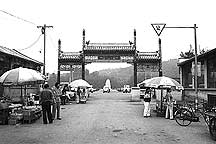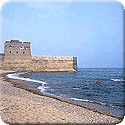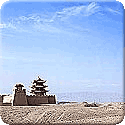Category: 万里长城Great Wall
古北口镇图片Gubeikou Town Pictures
-

The entrance to the town right off the national highway.
-

Gubeikou is a very small town consist of a few roads.
-

-

One of the new blocks in the back of the town. The town is changing rapidly, like much of China. More and more roads are being paved with concrete. And new concrete houses line its sides.
-

-

-

-

-

-

-

-

This is the back of the town by the foot of the mountains where the 蟠龙山长城 Panlongshan Wall is.
-

-

-

There is a memorial obelisk nearby commemorating the locals' resistance to the invading Japanese armies.
-

I was searching in this treeful mountain for the path up the Wall. I climbed several peaks in vain. All I can see is the Wall on the other side.
-

A house I came across in the valley while I was searching for a path up the Wall.
-

I had a nice conversation with this local. Here the old man was preparing the meal for his pigs.
-

The road out of the valley. In the distance is the 卧虎山长城 Wohushan Wall. I spent more than 2 hours trying to find a way up the 蟠龙山长城 Panlongshan Wall, from where I would move toward the 司马台长城 Simatai Wall. Having no luck and getting late, I decided to head back to town. This turned out to be better because I was able to climb the Wohushan Wall, which is a better wall than Panlongshan's.







